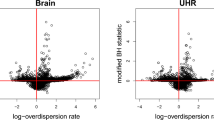Summary
There are givenk Poisson processes with mean arrival times 1/λ1,...1/λ k . Let λ[1]≦λ[2]≦...≦λ[k] denote the ordered set of values λ1...,λ[k]. We consider three procedures for selecting the process corresponding to λ[k]. The processes are observed until there areN arrivals from any of the given processes, when the processes are observed continuously, or until there are at leastN arrivals, when the processes are observed at successive intervals of time whereN is a pre-determined positive integer. In the continuous case, the process for which theNth arrival time is shortest, is selected. In the discrete case, the selection involves certain randomization.
Given (λ[k]/λ[k-1])≧0>1, it is shown that the probability of a correct selection (Pcs) is minimized whenθλ[1]=θλ[2]=...=θλ[k-1]=θλ[k]=θλ, say. The Pcs for this configuration is independent of λ for two of the given procedures, and monotone increasing in λ for the third. The value ofN is determined by a lower bound placed on the value of the Pcs.
The problem of selecting from given Poisson processes for the discrete case is related to the problem of selecting from given Poisson populations. An application of the given procedures to a problem of selecting the “most probable event” from a multinomial population, is considered.
Similar content being viewed by others
References
Alam, K., Thompson, J. R. and Seo, K. (1970). A sequential sampling rule for selecting the most probable multinomial event,Ann. Inst. Statist. Math.,23, 365–374.
Armitage, J. V. and Krishnaiah, P. R. (1964). Tables for the studentized largest chisquare distribution and their applications, Aerospace Research Laboratories, Office of Aerospace Research, United States Air Force.
Bechhofer, E. R., Kiefer, J. and Sobel, M. (1968). Sequential identification and ranking procedures, University of Chicago Statistics Monograph series.
Gupta, S. S. (1963). Probability integrals of multivariate normal and multivariatet, Ann. Math. Statist.,34, 792–828.
Gupta, S. S. (1963). On a selection and ranking procedure for gamma populations,Ann. Inst. Statist. Math.,14, 199–216.
Gupta, S. S. and Sobel, M. (1962). On the smallest of several correlatedF statistics,Biometrika,49, 509–523.
Krishnaiah, P. R. and Armitage, J. V. (1964). Distribution of the studentized smallest chi-square, with tables and applications, Aerospace Research Laboratories, Office of Aerospace Research, United States Air Force.
Lehmann, E. L. (1959).Testing statistical hypothesis, Wiley Publications in Mathematical Statistics, John Wiley & Sons, Inc., New York.
Milton, R. C. (1963). Tables for equally correlated multivariate normal probability integral, Technical Report No. 27, Department of Statistics, University of Minnesota.
Sobel, M. (1963). Single sample ranking problems with Poisson populations, University of Minnesota, Department of Statistics, Technical Report, No. 19.
Author information
Authors and Affiliations
About this article
Cite this article
Alam, K. Selection from poisson processes. Ann Inst Stat Math 23, 411–418 (1971). https://doi.org/10.1007/BF02479240
Received:
Issue Date:
DOI: https://doi.org/10.1007/BF02479240




